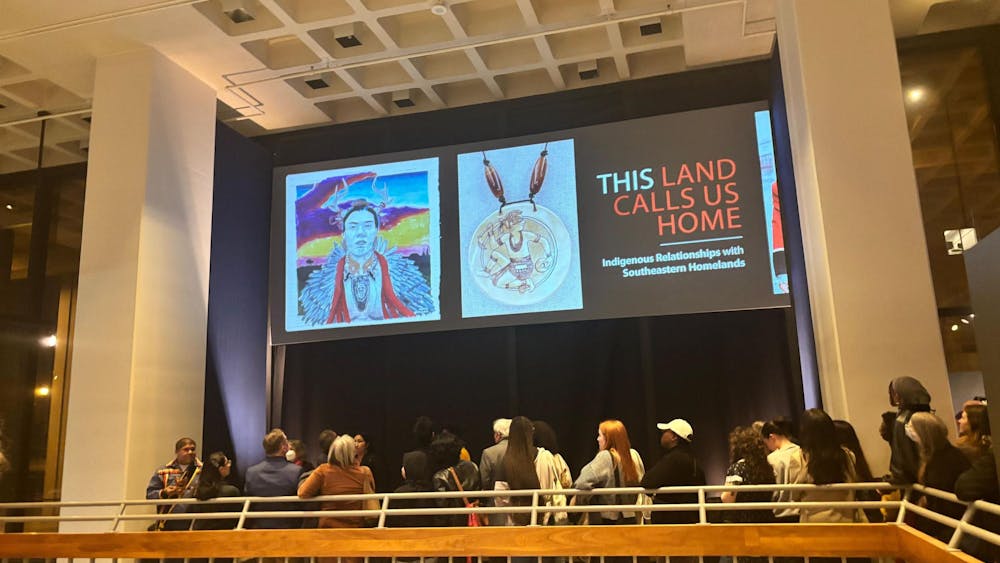When she steps into the studio, Spelman College Senior Lecturer of Dance Performance and Choreography Kathleen Wessel (03C) doesn’t immediately know what she’s going to create. She begins to “play,” moving and improvising until the blank slate fills with narrative and meaning. She starts with nothing and ends with everything. Wessel is a dancer, writer, former Emory Dance Company choreographer and former Oxford College adjunct dance professor who credits part of her success to her time as an undergraduate student at Emory University.

Wessel directed Spelman dance theater for five years before stepping into her current position in the school’s major of Dance Performance and Choreography. She is currently collaborating with Keith Arthur Bolden, a Spelman theater professor, to create a show that will premiere next year. This spring, she is teaching a course at Spelman entitled “Critical Writing for Dance,” which focuses on contextualizing and analyzing movement.
Growing up as a dancer, Wessel knew that she wanted to attend a university where she would be able to dance. The dance and movement studies major, which was passed in April of 1998, had not yet been established at Emory when she applied. At the time, she wasn’t considering a career as a professional dancer and merely wanted a school that would allow her to stay connected to dance, something she found in Emory’s Dance Company. Wessel’s involvement in the Company led her to teach dance at Emory and other schools.
“I really found a family and a real purpose in the dance program,” Wessel said.
While Wessel said the dance program was “her thing,” she ultimately graduated with a BA in psychology. The psychology department at Emory was extremely influential in Wessel’s path to becoming an artist. She distinctly remembered a course taught by Marshall Duke, in which the students looked at artists from the viewpoint of a psychologist. They asked questions like, does a mental disorder aid or hinder the artistic process and how are creativity and mental disorders interconnected? Throughout that course, Wessel said she learned to connect dance with academia and realized the unique opportunities the interdisciplinary nature of Emory’s undergraduate programs provided.
“That class really kind of helped solidify to me that there was so much crossover with the scholarship of artistry,” Wessel said. “And the possibility of what you could create … that was when my life took a turn towards being an artist.”
Additionally, the exploratory and flexible nature of Emory’s liberal arts curriculum fostered Wessel’s growth as a mover and creative. She recalled an English professor who suggested that Wessel and a friend perform a dance routine based on Toni Morrison’sportrayal of mother-daughter relationships in “Beloved.” Wessel also remembered an engaging Women’s Studies class taught by current Assistant Vice Provost for Faculty Success and Recognition Tiffany Worboy, who Wessel said was supportive of her dance endeavors. During this course, Wessel said she discovered more about how movement could reflect and embody a feminist identity and perspective.
“It felt like this huge revelation because in high school, you’re just going to class, learning the moves, performing them and then going home,” Wessel said. “You don’t connect to anything deeper to the world or yourself. So, seeing these possibilities through other disciplines and how they could be represented through my artistic brain was really exciting to me.”
As her undergraduate graduation was looming, Wessel’s Psychology and Dance professors encouraged her to attend graduate school. She ended up attending Florida State University, where she received her MFA in dance performance and choreography. She said that her decision to further pursue an education in the arts was largely influenced by her time as a choreographer for Emory’s Dance Company in her junior and senior years at Emory.
“We just had these amazing moments during EDC performances,” Wessel said. “We just got to kind of feel the sense of being alive that comes from being on a stage.”
Wessel also emphasized the role Associate Professor Lori Teague’s Movement Improvisation class played in her realization that she could really be an artist. The freedom Teague gave Wessel to explore her own movement style was instrumental in finding her artistic voice.
Similarly, Wessel said that she particularly enjoyed working with beginner dancers at Oxford because of their open mindedness in learning dance.
“There were no rules in their mind of what movement could and couldn’t be,” Wessel said. “That was really inspiring and interesting to me as an educator.”
Additionally, Wessel said that the vibrant artistic environment that constitutes Atlanta has deeply tied her to the city.
“If you want people to know who you are, you have to get out there in Atlanta and get out of the Emory bubble,” Wessel said. ”The Emory community will support you. Don’t wait until you graduate.”





